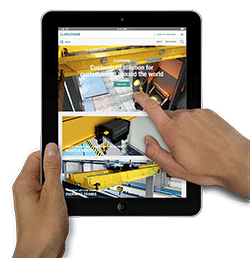Introduce of the Jib Crane
A jib crane is a type of crane making use of a mounted arm to lift, move, reducing material. The arm, mounted either perpendicular to or at an acute angle upwards from a pillar or wall, may rotate along its central axis via a limited arc or possibly a full circle. A jib crane is usually used in industrial settings, like warehouses and docks, to load and unload shipping containers.
A history from the Jib crane goes to Ancient Greece, the location where the idea of by using a mechanical arm to lift objects first came into wide use. The Romans later embraced the technology and applied it towards the construction of roads, aqueducts, along with other engineering projects. Cranes were refined, but remained largely identical in nature to classical designs prior to the industrial revolution and the introduction on the steam engine in the 1800s. With ever larger construction projects on land and sea, in addition to the growing demands from increasingly complex factories and shipping companies, cranes too developed in space and intricacy during this time.
In the modern jib crane, strong metal cabling is wrapped across the ends with the jib strut, while using the hoist end usually connected to a hook or electromagnet, along with the other end attached to a winch. If the winch is activated, the pulleys deliver a lifting force add up to the actual force being applied with the winch, multiplied from the number of cable lengths wrapped round the pulleys. In several jib cranes, the hoist might possibly move outwards and inwards across the length of the jib, offering sustained flexibility of movement.
The fundamental reasons for the quality crane is caused by the concept of mechanical advantage. Mechanical advantage is the concept that a product, such as a pulley, can multiply the force being given to it by way of certain factor. For this reason it will be possible, for instance, for a single man having a pulley to lift a similar heavy crate that may have a team of men to lift directly. Cranes incorporate a variety of pulleys with other simple machines, for example gears and levers, to greatly increase lifting capacity.
Jib cranes are not limited by fixed locations, and might be attached to a mobile chassis to be played with at temporary work sites or perhaps military operations. Such cranes generally sacrifice lifting convenience of mobility. Outriggers are crucial to get a mobile jib crane to help keep stability under load, unlike stationary ones that are firmly anchored set up.










